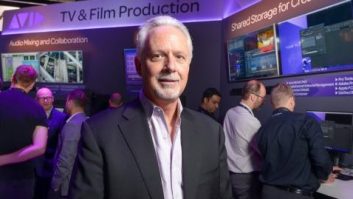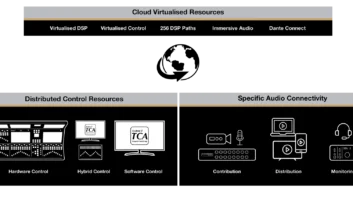News travels fast, and the rise of social media is making broadcasters compete with new publishers for the viewer’s attention. More often than not, when news finally airs on TV, consumers have already made up their minds about what constitutes the story through the lens of Facebook Live, Periscope or Instagram stories. For production teams used to verifying sources and reporting on news only once the full story has been uncovered, this situation can be unsettling.
Over the past few years, we have seen social media video snippets emerge on breaking news segments. However, quality is often sub-par compared to broadcast and the story is limited by the view of the contributor. The rise of the cloud is offering a new way for reporters and production teams to respond both to the time and quality challenges all at once. By being able to acquire multiple streams at once, all covering the same story from a range of personal and highly authentic angles and perspectives, broadcasters have access not only to more material to choose from but also a wider, more authentic perspective and are able to share both sides of the story with viewers.
Opening the playing field for more collaborative reporting
A big challenge that news production teams have today is being able to acquire content in a timely manner, produce and then broadcast the story live before anyone else does.
Today, everyone and anyone can be a content creator. With the rise of high-quality cameras on smartphones and social media platforms turning into publishers, broadcasters no longer need to solely rely on professional cameras and OB vans to capture and produce content ready for live distribution on air. Assets from professional cameras are being complemented by drones and connected devices, resulting in endless amounts of content being available. Any event generates video content today, whether a football game, a political rally or a typhoon. Yet, broadcasters have long struggled to harvest this content.
By using a cloud based architecture for the contribution and curation process, broadcasters can speed up and simplify the acquisition, production and routing processes, regardless of the size of their teams on-site. For example, reporting from a journalist on-site can be enhanced by short snippets from local consumers to enable smaller broadcasters to compete with the largest news organisations worldwide. In addition, the cloud provides a level of flexibility that is perfectly suited to the needs of breaking news channels. There are no limitations on input or output sources being used by the operator, and content can be routed to as many remote production houses as necessary. This results in faster, more accurate global reporting, and can lead to more sides of the story being shown on camera for more nuanced stories.
By building a newsroom in the cloud for its United Nations bureau, Al Jazeera is showing the way for large media networks. The new infrastructure improves collaboration between contributors, producers and editors and speeds up reporting of breaking news from the field to the public. Simply, Al Jazeera is able to ingest live interviews and events recorded and stored on-site alongside content from various mediums. Used for both live and recorded content, the system simplifies content acquisition and curation, enables Al Jazeera to record and schedule audio and video media, and route the streams to its Arabic and English newsrooms for further distribution. The solution easily scales to allow the number of sources and destinations to change according to Al Jazeera’s needs.
Automating the curation process with AI
Acquiring content at scale is only the first step; broadcasters and production teams need to be able to identify the right feeds for their segments. Having access to a never-ending video library can be very daunting prospect for broadcasters which leads to the question: how can a broadcaster pick and choose the perfect clip to support a specific segment that will run on air only minutes later? The answer is AI. Using AI helps production teams to easily prepare content for live or near-live programming by simplifying the selection process and identifying elements in the video and automatically identifying the best options. By automating the manual tasks in the video workflow to acquire and filter multiple assets and sources, AI is able to dive into user generated, long-tail and niche video to select and highlight the most relevant content based on a variety of metadata such as objects, geography, people, movement, and more.
AI will transform streaming video into personalised, dynamic channels comprised of professionally produced and user generated live and on demand content for each viewer. In the longer-term future, and when AI and Machine Learning algorithms are trained, we can imagine whole live streams will be automated to make mass content acquisition usable when it is live. Operators will have the option to automatically trigger graphics or switch between content (to follow a specific cyclist in a race, for example) or automatically transfer segments to a different server.
Despite the fear that AI will make jobs redundant, the reality for news broadcasters is radically different: AI helps production teams work both faster and smarter and is not a replacement to the skills of a human operator. For example, AI will help prepare highlights reels more quickly, but it won’t take away the creative and editorial role of developing great content that tells a brilliant story.
Ultimately, AI for video allows content programmers to scale the tasks involved in acquiring, moderating, processing and producing massive amounts of video to enable hyper-personalised viewing experiences that captivate and engage audiences. It also allows viewers to be a part of the breaking story by sharing their UGC with the broadcaster or streaming provider over the cloud – all they need is a URL or QR code to become a contributor.
The cloud combined with AI enables broadcasters to work more closely with these new content creators and their own teams; by engaging with them, they can significantly reduce their production costs while speeding up the acquisition-to-production-to-distribution process and deliver stories that resonate with viewers without compromising on high quality reporting.







